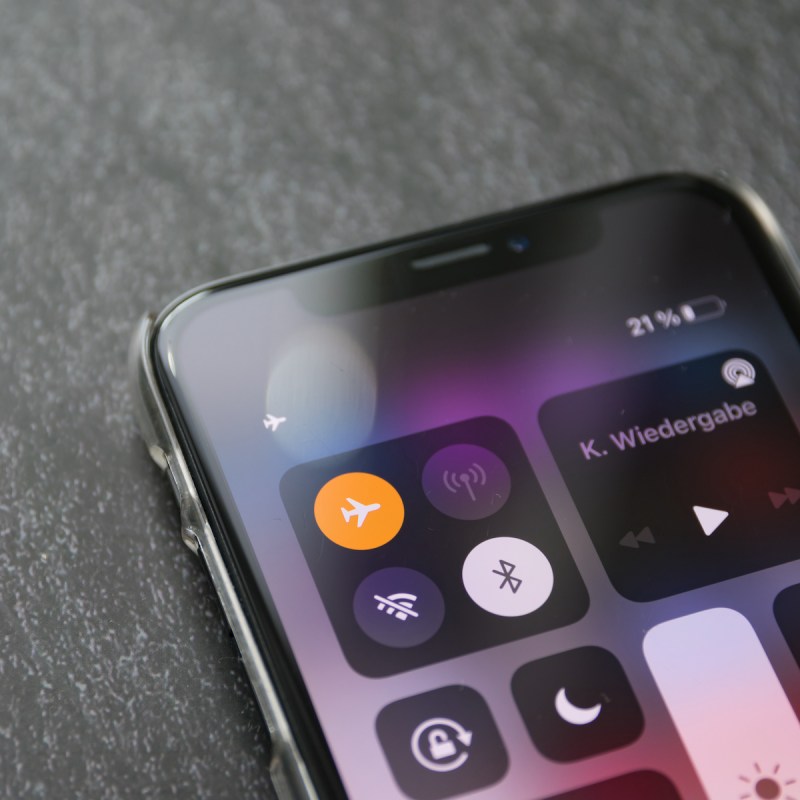
Once you buckle in and get ready for your flight, you will undoubtedly hear the familiar PA before the main cabin door closes: “Please power down your cell phones or put them in airplane mode.” Why?
Videos by TravelAwaits
For many travelers, this may seem silly or unnecessary in 2022. Hasn’t technology progressed beyond this? Aviation has come a long way — it’s common, cheap, and safe — but that old pesky rule of no-cell-phone rule still exists. What’s the big deal?
I’ve been a pilot for 22 years, and I can shed some light on this.

1. Cell Phones Can Cause Interference
The first hand-sized mobile phones using the 2G network were introduced in the early 90s, and the Federal Communications Commission quickly issued a ban on using them on commercial flights. The primary reason, it said, was that the network could interfere with communications on the ground. The FAA also prohibited their use, stating that cell phones pose a risk to the navigation and avionic systems on aircraft.
The problem is that cell phones transmit radio waves to cell towers on the ground. Those wavelengths span most of the radio spectrum. Instruments and avionics on jets rely on radio waves, too, similar to the radio waves transmitted by mobile phones. If everyone on the jet turned on and used their phones at the same time, the group of electronic devices might transmit radio waves powerful enough to interfere with the data capability of the aircraft. Flying low visibility approaches requires extremely accurate data that is displayed to the pilots, who interpret the information and fly safely and land. Any disruptions or interference with the instrumentation would require a “missed approach,” most likely resulting in landing at an alternate airport.
Technology has dramatically changed over the last 30 years, but the rule, archaic as it seems, still stands. The FAA concluded that certain display units and digital screens in the cockpit are vulnerable to interferences that can come from Wi-Fi and mobile phones. Interference from a cell phone during critical phases of flight, like landing in poor weather conditions, could still have catastrophic results.
In 2013 the FAA softened its position and said you can leave the phone on, but put it in airplane mode, limiting the ability to transmit radio signals to cell towers. Commercial jets supply their own “hot spots” for passengers to connect to their own Wi-Fi router to watch movies, use the internet, and text.

2. No One Wants To Hear You
Once boarding is complete, the flight attendants have quite a litany of important information to get out to all of the passengers. They need everyone’s full attention and certainly don’t want to see passengers talking on their cell phones.
People sitting in exit rows have to make eye contact and answer specific questions from the attendants about the responsibilities of sitting in those seats. Without the ban, people might be too distracted by having a conversation on their cell and not listening to directions from the attendants. Heaven forbid a situation happens that requires an emergency egress.
And the elephant in the room is the reality that if people could talk on their phones in flight, their seatmates would dread every second of their conversations. We have all heard people who can’t hear well — they shout into the phone to hear themselves. We would all have to listen to their conversation, and that would make traveling even more unpleasant.
As pilots, in certain jets, we have protocols and specific scripts we must say over the PA prior to performing a very specific approach to landing in very low weather conditions. The best PA I’ve ever heard is when the captain picked up the mike and went off script. We were attempting to land at LAX using a special low-visibility approach procedure. He calmly said, “We are going to attempt an approach into LAX. If you decide to turn your phones on and we get one erroneous indication from our instruments, we are canceling the approach and flying to our alternate airport, Ontario. Once there, all 175 of us are going to collect our bags and get on buses, then head over for the hour-long drive back to LAX. Please, do not turn your phones on!”
It was brilliant! We had an uneventful landing at LAX and didn’t spend the next 3 hours waiting for a bus!

Pro Tip: If you need to communicate with someone on the ground while you are flying, there is an easy alternative. Every U.S. airline offers you the option of buying Wi-fi or letting you use it for free. You can’t FaceTime each other, but you can certainly send texts and even emails. Once you touch down after landing, you can turn off airplane mode (or turn on your cell phone) and dial away.
